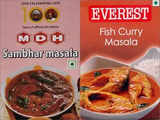Suggest a new Definition
Proposed definitions will be considered for inclusion in the Economictimes.com
What is 'Quality Control'
Introduction
Any product or service defines and speaks for the company or brand that creates it. This is exactly why there is a need for perfection for a product, from the manufacturing phase to the outcome phase. In order to achieve that perfect quality, every organization should adopt a quality control plan and strategy. This is crucial and requires continuous reviewing and efforts. After all, the quality of the product ultimately decides its place in the market, in the long run.
What is Quality Control?
Quality Control is a process or a set of procedures followed by a company, in order to assure that the product meets the set standards and requirements. Every organization has either an internal department of Quality Control or a hired external body to supervise the manufacturing process and resolve defects or inefficiencies. There are set frameworks, models, tests and measures to identify and fix issues related to Quality management.
Examples of Quality Control
The process of quality control varies according to the industry. For example, a Garment industry would emphasize on the quality control of designs, specifications and needs of the consumer. So, the inspections would focus on such criteria ensuring satisfaction from the clients and customers. They will mostly have a Quality Control Department inside the premises to audit the process. A Food factory has concerns in the health and hygiene aspects of the consumer, so they conduct tests in the laboratory within the organization and even send samples to an external laboratory for testing.
Quality Control Methodologies
There are several methods to conduct quality control management such as Process Control, Control Charts and Inspection to name a few. Some of the most effective methods are described here.
Control Charts
These are used to represent and analyze the causes and concern graphically. This is an effective way to detect and locate a deviation and finds ways to minimize or stop them from recurring. The chart can be univariate or multivariate depending on the number of variations the issues possess. An X Bar chart is the most effective type of control charts used to determine the issue, fix it and predict the result. The variations detected in these patterns assist in deriving the relationship between the product manufactured and the required benchmark of the product in the market.
Process Control
Process control allows the personnel to achieve perfection through testing and analyzing the product before it hits the market. Acceptance Sampling is a process where the quality is assessed post production. A sample of the product is tested and results determine whether it can proceed to the next phase. If the sample is rejected, the entire lot gets rejected.
100% Inspection Method
This method is a thorough assessment process where every part of the process and product is monitored and tested in order to rule out imperfections at the initial stage. Product Inspection and Process Inspection are the two aspects of this comprehensive method where a defect is identified, fixed or returned for correction and in an extreme case, rejected.
Taguchi Method
It is a statistical method adopted by huge companies like Toyota and Ford to ensure better quality. It aims to prevent error at the designing stage, rather than having to wait until the manufacturing is done. The model follows three phases namely the System Phase, Parameter Phase and the Designing Phase. The System Phase, promotes the idea of creating a new design or modifying the prevailing design to achieve the required quality. The Parameter Phase identifies the parameters involved in the production to reduce variations. The Tolerance Phase aims to enhance performance by recognizing tolerance limits. When the production deviates from the goal, the quality of the product drops down.
Six Sigma Method
Importance of Quality Control
Quality control is essential to build a positive reputation for the brand.
The results of evidence-based research and effective strategies create trustworthiness among the customers.
It is necessary to improve the standards of manufacturing and marketing.
It reduces expenses in unprecedented inspection procedures.
Quality Control system ensures high standard products which in turn inspires the employees to strive for excellence.
It makes exporting business easier.
QA Vs QC
The most common confusion associated with Quality Control is being misunderstood for Quality Assurance. Though the two are parts of Quality Management, Quality Assurance is process specific and driven towards actions that ensure quality through checklists, standards and documentations. Whereas, Quality Control is product specific and driven more towards inspections, reviews and remedial actions post production.
What are the types of Quality Control?
There are many types of quality control and the most common are Control Charts, Inspection, Process Control and Six Sigma.
What are the 2 main objectives of Quality Control?
Quality Control aims to outline the standards and requirements of a product in the market and define clear criteria to inspect and resolve errors.
How does quality control work?
Quality control works by collecting data, finding outcomes, recognizing errors, creating an action plan, implementing, checking progress and constantly reviewing and revising.
Why is quality control important?
Quality control is essential to enhance the market value, promote brand recognition and bring about a uniformity among the products.
What is the difference between Quality Assurance and Quality Control?
Quality assurance is ensuring that a product meets its standards by preventing errors whereas Quality Control is identifying issues and concerns of a product post development.
Disclaimer: This content is authored by an external agency. The views expressed here are that of the respective authors/ entities and do not represent the views of Economic Times (ET). ET does not guarantee, vouch for or endorse any of its contents nor is responsible for them in any manner whatsoever. Please take all steps necessary to ascertain that any information and content provided is correct, updated and verified. ET hereby disclaims any and all warranties, express or implied, relating to the report and any content therein.
Any product or service defines and speaks for the company or brand that creates it. This is exactly why there is a need for perfection for a product, from the manufacturing phase to the outcome phase. In order to achieve that perfect quality, every organization should adopt a quality control plan and strategy. This is crucial and requires continuous reviewing and efforts. After all, the quality of the product ultimately decides its place in the market, in the long run.
What is Quality Control?
Quality Control is a process or a set of procedures followed by a company, in order to assure that the product meets the set standards and requirements. Every organization has either an internal department of Quality Control or a hired external body to supervise the manufacturing process and resolve defects or inefficiencies. There are set frameworks, models, tests and measures to identify and fix issues related to Quality management.
Examples of Quality Control
The process of quality control varies according to the industry. For example, a Garment industry would emphasize on the quality control of designs, specifications and needs of the consumer. So, the inspections would focus on such criteria ensuring satisfaction from the clients and customers. They will mostly have a Quality Control Department inside the premises to audit the process. A Food factory has concerns in the health and hygiene aspects of the consumer, so they conduct tests in the laboratory within the organization and even send samples to an external laboratory for testing.
Quality Control Methodologies
There are several methods to conduct quality control management such as Process Control, Control Charts and Inspection to name a few. Some of the most effective methods are described here.
Control Charts
These are used to represent and analyze the causes and concern graphically. This is an effective way to detect and locate a deviation and finds ways to minimize or stop them from recurring. The chart can be univariate or multivariate depending on the number of variations the issues possess. An X Bar chart is the most effective type of control charts used to determine the issue, fix it and predict the result. The variations detected in these patterns assist in deriving the relationship between the product manufactured and the required benchmark of the product in the market.
Process Control
Process control allows the personnel to achieve perfection through testing and analyzing the product before it hits the market. Acceptance Sampling is a process where the quality is assessed post production. A sample of the product is tested and results determine whether it can proceed to the next phase. If the sample is rejected, the entire lot gets rejected.
100% Inspection Method
This method is a thorough assessment process where every part of the process and product is monitored and tested in order to rule out imperfections at the initial stage. Product Inspection and Process Inspection are the two aspects of this comprehensive method where a defect is identified, fixed or returned for correction and in an extreme case, rejected.
Taguchi Method
It is a statistical method adopted by huge companies like Toyota and Ford to ensure better quality. It aims to prevent error at the designing stage, rather than having to wait until the manufacturing is done. The model follows three phases namely the System Phase, Parameter Phase and the Designing Phase. The System Phase, promotes the idea of creating a new design or modifying the prevailing design to achieve the required quality. The Parameter Phase identifies the parameters involved in the production to reduce variations. The Tolerance Phase aims to enhance performance by recognizing tolerance limits. When the production deviates from the goal, the quality of the product drops down.
Six Sigma Method
- It is a quality management strategy which intends to promote the improvement of the product quality. It was first employed by the Motorola in 1986. The core of Six Sigma is to follow the DMAIC rule to ensure perfection.
- Define the error or concern using reviews or feedback from the peers or customers.
- Measure the depth of the issue by gathering information regarding the same, from every available resource.
- Analyze the cause using the data collected and investigate further.
- Improve the quality using the insights derived through the analysis, by either fixing the errors or creating a new design.
- Control further defective actions by maintaining the standard.
Importance of Quality Control
Quality control is essential to build a positive reputation for the brand.
The results of evidence-based research and effective strategies create trustworthiness among the customers.
It is necessary to improve the standards of manufacturing and marketing.
It reduces expenses in unprecedented inspection procedures.
Quality Control system ensures high standard products which in turn inspires the employees to strive for excellence.
It makes exporting business easier.
QA Vs QC
The most common confusion associated with Quality Control is being misunderstood for Quality Assurance. Though the two are parts of Quality Management, Quality Assurance is process specific and driven towards actions that ensure quality through checklists, standards and documentations. Whereas, Quality Control is product specific and driven more towards inspections, reviews and remedial actions post production.
What are the types of Quality Control?
There are many types of quality control and the most common are Control Charts, Inspection, Process Control and Six Sigma.
What are the 2 main objectives of Quality Control?
Quality Control aims to outline the standards and requirements of a product in the market and define clear criteria to inspect and resolve errors.
How does quality control work?
Quality control works by collecting data, finding outcomes, recognizing errors, creating an action plan, implementing, checking progress and constantly reviewing and revising.
Why is quality control important?
Quality control is essential to enhance the market value, promote brand recognition and bring about a uniformity among the products.
What is the difference between Quality Assurance and Quality Control?
Quality assurance is ensuring that a product meets its standards by preventing errors whereas Quality Control is identifying issues and concerns of a product post development.
Disclaimer: This content is authored by an external agency. The views expressed here are that of the respective authors/ entities and do not represent the views of Economic Times (ET). ET does not guarantee, vouch for or endorse any of its contents nor is responsible for them in any manner whatsoever. Please take all steps necessary to ascertain that any information and content provided is correct, updated and verified. ET hereby disclaims any and all warranties, express or implied, relating to the report and any content therein.
Related News
 Airbus says will buy 'major activities' of subcontractor SpiritEuropean aerospace giant Airbus announced on Monday its intention to acquire major activities related to Airbus from subcontractor Spirit AeroSystems. This move comes as US competitor Boeing prepares to take over the majority of Spirit AeroSystems' operations.
Airbus says will buy 'major activities' of subcontractor SpiritEuropean aerospace giant Airbus announced on Monday its intention to acquire major activities related to Airbus from subcontractor Spirit AeroSystems. This move comes as US competitor Boeing prepares to take over the majority of Spirit AeroSystems' operations. US lawmakers questions FDAs drug inspection programme in India and ChinaThree top American lawmakers have raised concerns about the FDA's foreign drug inspection program in India and China. In a letter to FDA Commissioner Robert Califf, they highlighted inconsistencies in inspection outcomes from January 2014 to April 2024. Some inspectors reported no compliance issues in numerous inspections, while others found issues in almost every inspection. The lawmakers, Cathy McMorris Rodgers, Brett Guthrie, and Morgan Griffith, pointed out these discrepancies and called for an investigation into the skill and thoroughness of FDA inspectors to ensure rigorous and consistent inspections.
US lawmakers questions FDAs drug inspection programme in India and ChinaThree top American lawmakers have raised concerns about the FDA's foreign drug inspection program in India and China. In a letter to FDA Commissioner Robert Califf, they highlighted inconsistencies in inspection outcomes from January 2014 to April 2024. Some inspectors reported no compliance issues in numerous inspections, while others found issues in almost every inspection. The lawmakers, Cathy McMorris Rodgers, Brett Guthrie, and Morgan Griffith, pointed out these discrepancies and called for an investigation into the skill and thoroughness of FDA inspectors to ensure rigorous and consistent inspections. SOP in final stages to facilitate visa for Chinese technicians needed in mfg units: OfficialThe Indian government has finalized a standard operating procedure (SOP) to expedite visa approvals for Chinese professionals needed by manufacturing units under the PLI scheme. This move aims to address delays in visa processing for technicians essential for installation, repairs, and training in sectors like textiles and automobiles
SOP in final stages to facilitate visa for Chinese technicians needed in mfg units: OfficialThe Indian government has finalized a standard operating procedure (SOP) to expedite visa approvals for Chinese professionals needed by manufacturing units under the PLI scheme. This move aims to address delays in visa processing for technicians essential for installation, repairs, and training in sectors like textiles and automobiles Rationalisation of govt bodies: WCD ministry 'officially' dissolves Food and Nutrition BoardThe Women and Child Development (WCD) Ministry has officially dissolved the Food and Nutrition Board (FNB), a technical wing of the ministry responsible for providing technical and logistical support for community nutrition programmes. The FNB had a network of offices and quality control laboratories in Delhi, Faridabad, Mumbai, Kolkata, and Chennai. The decision came after a Cabinet meeting in April last year, following recommendations from the Principal Economic Adviser's report on the rationalisation of government bodies.
Rationalisation of govt bodies: WCD ministry 'officially' dissolves Food and Nutrition BoardThe Women and Child Development (WCD) Ministry has officially dissolved the Food and Nutrition Board (FNB), a technical wing of the ministry responsible for providing technical and logistical support for community nutrition programmes. The FNB had a network of offices and quality control laboratories in Delhi, Faridabad, Mumbai, Kolkata, and Chennai. The decision came after a Cabinet meeting in April last year, following recommendations from the Principal Economic Adviser's report on the rationalisation of government bodies. Zepto customer receives nearly-expired 10kg flour pack, company says 'eat it in 7-days.' What happened next?Delhi resident Gajender Yadav received a 10 kg packet of wheat flour from Zepto with an expiration date just eight days away. Frustrated, he took to social media to share his experience, humorously inviting Zepto to help him finish the flour. The post went viral, prompting a response from Zepto, but further escalation occurred when customer care advised him to consume the flour within seven days. Yadav's witty updates and criticisms of Zepto's handling of near-expiry products gained widespread attention.
Zepto customer receives nearly-expired 10kg flour pack, company says 'eat it in 7-days.' What happened next?Delhi resident Gajender Yadav received a 10 kg packet of wheat flour from Zepto with an expiration date just eight days away. Frustrated, he took to social media to share his experience, humorously inviting Zepto to help him finish the flour. The post went viral, prompting a response from Zepto, but further escalation occurred when customer care advised him to consume the flour within seven days. Yadav's witty updates and criticisms of Zepto's handling of near-expiry products gained widespread attention. Nepal follows HK and Singapore, bans India’s Everest and MDH spicesNepal’s Department of Food Technology and Quality reported that the ban is due to the suspicion of ethylene oxide contamination. The banned spices include madras curry powder, sambhar mixed masala powder, mixed masala curry powder of MDH, and fish curry masala of Everest. The importers and traders are requested to recall these products from the Nepalese market.
Nepal follows HK and Singapore, bans India’s Everest and MDH spicesNepal’s Department of Food Technology and Quality reported that the ban is due to the suspicion of ethylene oxide contamination. The banned spices include madras curry powder, sambhar mixed masala powder, mixed masala curry powder of MDH, and fish curry masala of Everest. The importers and traders are requested to recall these products from the Nepalese market. We have lots of tailored solutions for MSMEs to drive efficiency and cut costs: Bar Code India's Ram BhutaniBar Code India (BCI) claims to leverage over 25 years of expertise to deliver cutting-edge software and hardware solutions that enhance supply chain and manufacturing operations. At the core of BCI's unique selling propositions are its indigenous products like RFID readers and IoT sensors.
We have lots of tailored solutions for MSMEs to drive efficiency and cut costs: Bar Code India's Ram BhutaniBar Code India (BCI) claims to leverage over 25 years of expertise to deliver cutting-edge software and hardware solutions that enhance supply chain and manufacturing operations. At the core of BCI's unique selling propositions are its indigenous products like RFID readers and IoT sensors. Crisis-ridden Boeing hopes for quiet annual meetingBoeing's annual meeting is fraught with tension as shareholders may rebuke CEO Dave Calhoun. Glass Lewis and ISS oppose Calhoun's nomination and pay package. New Chair Steve Mollenkopf plays a key role. Safety concerns linger after Alaska Airlines incident and 737 MAX crashes.
Crisis-ridden Boeing hopes for quiet annual meetingBoeing's annual meeting is fraught with tension as shareholders may rebuke CEO Dave Calhoun. Glass Lewis and ISS oppose Calhoun's nomination and pay package. New Chair Steve Mollenkopf plays a key role. Safety concerns linger after Alaska Airlines incident and 737 MAX crashes. Govt calls meet to discuss measures to bring gloves under quality controlUnion government's high-level meeting aims to address the issue of substandard glove imports from Southeast Asia, focusing on implementing quality control orders for surgical gloves to ensure better standards in the domestic market.
Govt calls meet to discuss measures to bring gloves under quality controlUnion government's high-level meeting aims to address the issue of substandard glove imports from Southeast Asia, focusing on implementing quality control orders for surgical gloves to ensure better standards in the domestic market. Centre relaxes quality control regime on steel and textilesThe Centre has exempted inputs used in export products from quality control orders issued by the Steel Ministry, DPIIT, and Textiles Ministry, as per the Directorate General of Foreign Trade's Foreign Trade Policy, 2023. Manufacturers no longer need prior approvals from BIS for selling regulated items in the country.
Centre relaxes quality control regime on steel and textilesThe Centre has exempted inputs used in export products from quality control orders issued by the Steel Ministry, DPIIT, and Textiles Ministry, as per the Directorate General of Foreign Trade's Foreign Trade Policy, 2023. Manufacturers no longer need prior approvals from BIS for selling regulated items in the country.
Load More